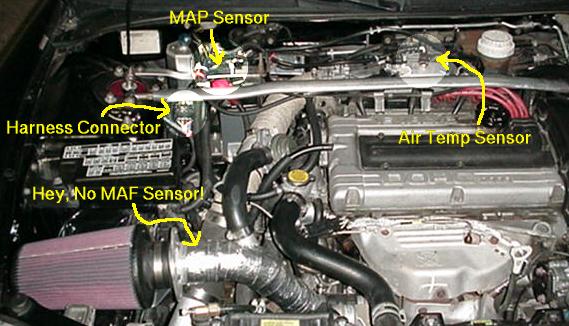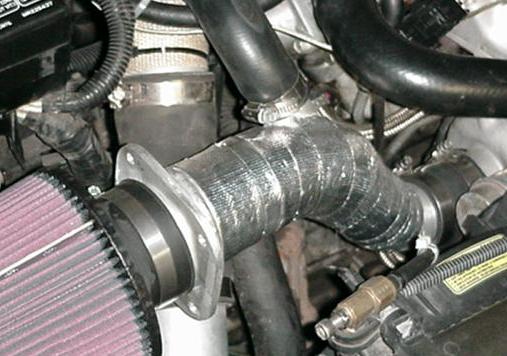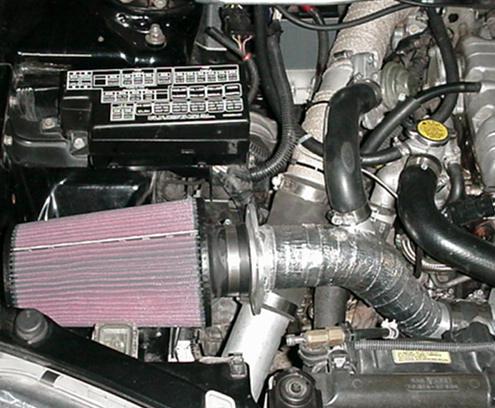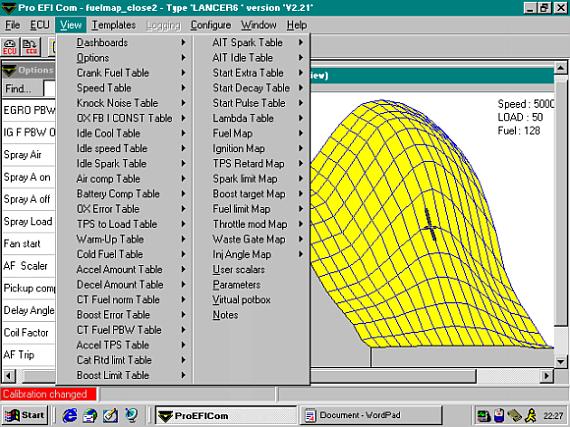Pro EFI ECU Install Part 2

Here's an engine bay shot that shows everything in place, including the replacement intake pipe. Everything works at this point, and the car has been raced in this configuration several times now. All that remains to be done is the removal of unused sensors and solenoids.

Here's a closeup of the intake pipe and air filter. It's made out of mandrel-bent aluminum sections, TIG welded together, and wrapped with reflective insulation. It starts out at 3" at the filter, necks down to 2.75" at the first bend, and then necks down again to 2.25" at the turbine inlet. The flange just past the filter is for the airbox heat shield (yet to be fabricated)
Note that the BOV inlet was retained, even though a speed/density system can vent to atmosphere. Why waste filtered air?

Another shot of the intake and intercooler piping. Notice how much larger the air filter is, and how straight the intercooler piping is. Lightweight, free-flowing, and as straight as possible. Little things add up! The turbo can now spool from dead idle to 24PSI in 1.5 seconds!

This is a screenshot of the ProEFI interface, showing all that's available. The yellow blob is the fuel map. More control than you ever thought possible!
2010 Update: In 2000 when we did this modification, this was a really, really big deal. This was the second DSM ever converted to standalone EFI (John Shepherd was the first) and at the time, everybody thought we were nuts.
Jason from ProEFI, of course, went on to design the AEM EMS (in partnership with GEMS, who made the hardware for the Sequential 4, and the software for both the S4 and the AEM EMS. The "plug and play" wiring harness of the S4 went on to become the "plug and play" interface for the AEM EMS as well. Effectively, what you are seeing here is the prototype AEM EMS.
Jason eventually left AEM and rebooted ProEFI, but AEM still makes the EMS and it is still powered by GEMS software. I guess that makes me one of the longest-running AEM EMS tuners in the world....
Hell, I even have one in my street car.
We had a number of teething problems with this system, some of which were electro-mechanical, and most of which were just learning how to tune and how the software worked. I can say, however, that the decision to go down this road was absolutely correct. The car always put out way more power and torque than expected and this computer was a big part of the reason why. And amazingly, we never blew up a motor.
